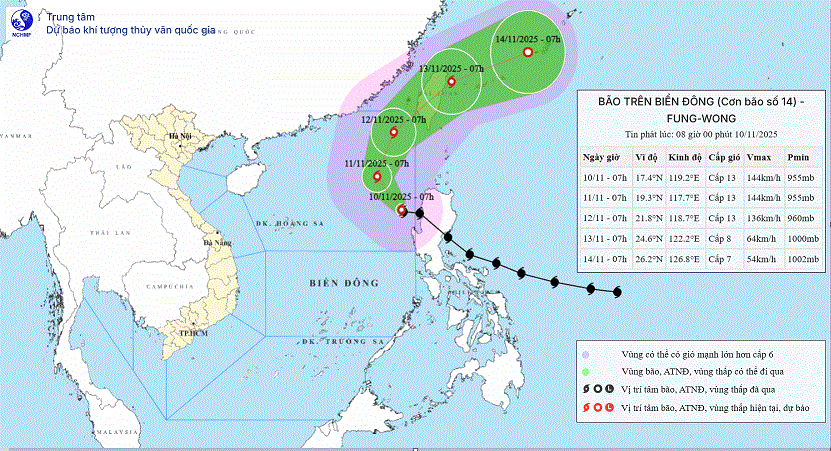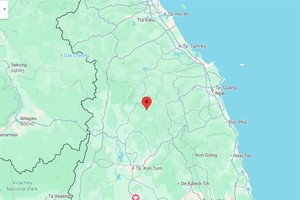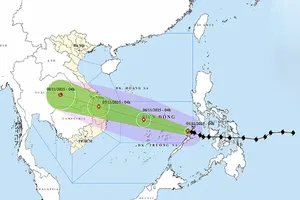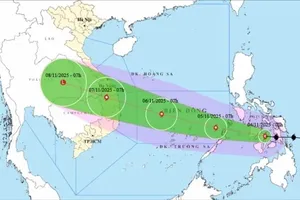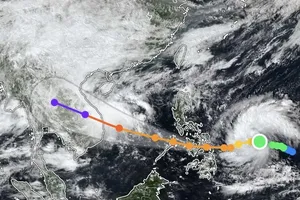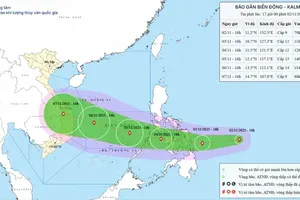
According to the National Center for Hydrometeorological Forecasting, as of 11 a.m. on November 10, the center of typhoon Fung Wong was located over the eastern waters of the northern East Sea. Winds near the storm’s center reached level 13 (134–149 km per hour) with gusts up to level 16 (184–201 km per hour).
From now until November 13, the typhoon is expected to change direction repeatedly, moving first toward the north-northwest, then shifting to the north-northeast and northeast, with its speed gradually increasing from 10 to 20 km/h. The storm will primarily affect the eastern and northeastern waters of the northern East Sea before gradually weakening as it approaches the northeastern waters near Taiwan (China).
Although the typhoon’s center will not penetrate deeply into the East Sea, it is still expected to produce extremely hazardous weather conditions in the northern East Sea region.
On the morning of November 10, the National Civil Defense Steering Committee issued a dispatch to 13 coastal provinces and cities from Quang Ninh to Dak Lak, as well as relevant ministries, urging them to closely monitor the typhoon’s developments, manage and notify vessels at sea, prepare search and rescue forces, and strengthen propaganda work to respond to Fung Wong proactively.
